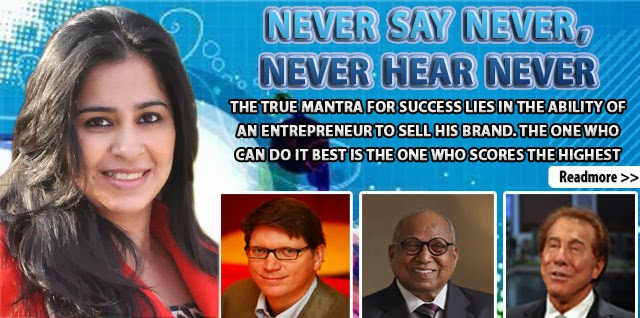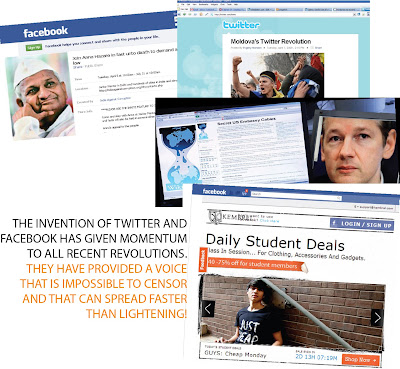Don’t forget to look below
Banking on just 30-second TV slots for promoting your brand and selling your wares is passé. Marketers globally and in India are discovering that it’s time to make a real connect with the discerning consumer...
On Tuesday, April 8, Starbucks gave away free 8 oz cups of Pike Place Roast – (a new Coffee blend) at more than 7,000 US stores. The event was more than just free coffee distribution but a “coffee tasting” experience according to Starbucks. Customers were instructed to smell, then slurp (which enabled the subtle flavours to reach your nose), then taste and then describe the whole experience. With the help of this event the company attempted to connect with the customers. It wanted them to not think of Starbucks as a corporation, but as a place where you have the most fabulous coffee drinking experience.
A recent poll revealed that a lot of consumers felt that the Starbucks brand is no longer fashionable, no longer in vogue. The name seems to have lost its cool. Some say Starbucks, which rose in popularity on the basis of its claim to be committed to ethical coffee sourcing has, along the way, lost its heart. One reason could be its very rapid growth, which turned off many consumers. Another reason could be its quickly eroding competitive advantage. Today, everyone right from McDonalds to other coffee houses have similar flavours and product offerings as those of Starbucks. To top it all everyone now claims to sell ‘ethical’ coffee! In a desperate bid to climb back on top of the popularity ladder, early this year, Starbucks sacked its CEO Jim Donald and brought back its original founder Howard Schultz. Schultz soon realised it was a series of below-the-line (BTL) activities that could slowly nurture back the good-ol’ reputation of the brand. From making sure that the outlet smells of roasting coffee, by banning the sales of hot breakfast food (which was masking the smell) to giving away free samples of its new coffee flavour, Schultz is doing it all. If distributing free coffee was not enough, the company now plans to give away free coupons every Wednesday (till May 28) in USA … their logic... not everyone could make it to the big event on April 8, when they distributed free coffee. The company upped its advertising budget from $38 million in 2006 to $68 million in 2007, yet it knew that just advertising is going to take it nowhere. It needed events that could be customised, made more interesting and hence generate greater impact on the target audience. Come to think of it, till very recently Starbucks did not see the need for such activities… competition made it rethink.
Decades ago, on April 22, 1970, Earth Day was celebrated, to draw the attention of the world toward things that were harmful to the earth and the environment. Today, according to Advertising Age, Earth Day is the new Christmas when all companies paint themselves green to help raise awareness, but more so to raise their sales. Today, any day of any significance (and believe me there are a whole lot of them) is a marketing event. Be it Earth day, Halloween Day, Friendship Day, Grandparents Day…whatever. From enviro-friendly toys, to reusable bags, to green tea to even Barbie, everything goes green during the Earth Day week and gives marketers the chance to organise huge events to promote the cause and their sales too.
Remember a cricket match played a few days back in Kolkata? I would not blame you if you cannot recall the names of the teams or the players except Shah Rukh Khan. After all it was not the game, but the before and after activities that caught the fancy of the nation. From eye-boggling cheer-leaders, to fireworks, to celebrity line-ups, the match had it all. Cricket was incidental. Shah Rukh Khan’s amazing promotions surely won him the ‘man-of-the-match’ title. That’s the power of BTL. It can entertain you and charm you into remembering the product or service. It gives you reason to discuss the brand, something every marketer dreams of.
ATL or BTL
The novel Da Vinci Code released in March 2003 with just 85,000 copies. Apart from its controversial contents, it was the word-of-mouth that shot it to the No.1 position on the New York Times Best Seller List, where it remained for fourteen consecutive weeks. When it was made into a movie, Sony Pictures used innovative BTL activities. In association with Google, it displayed puzzles that were time-bound on the website. A new puzzle was put up everyday. The first 10,000 participants who correctly solved all 24 daily puzzles were then chosen for the mega prize. The grand prize winner received a first-class trip to each of the prominent locations featured in the movie, apart from various Sony products. This way Google got its hits and Sony got sales of movie tickets.
BTL activities create buzz and attract the attention of the target audience. Pepsi organised an inter-school cricket event for 425 schools across 14 cities, which worked wonders for it. This was the exact age group they wanted to target. Mass advertising is more general in its appeal, whereas through BTL you can focus your efforts better, customise better.
One day on the National Highway 8 of Delhi, people saw an athlete jogging for a whole day on the treadmill. It was Nike’s way of promoting its sportswear.Talk of grabbing eye balls… I’m sure no one on that highway missed this one. LG, which is celebrating the completion of its 11th year in India and has hardly ever indulged in BTL activities, was for the first time seen participating in the Delhi Shopping Festival to help improve its brand visibility.
The FICCI-PricewaterhouseCoopers annual report 2007 estimated that BTL spending in India is at Rs.9 billion and is expected to grow to Rs.19 billion by 2010. In India, we still haven’t explored the numerous new & unique ways of doing BTL. Indian brands have played it safe with conventional forms of BTL like events, road shows, sampling, exhibitions et al.
However there is a lot more to it. Word of mouth, viral marketing, podcasting etc. The scope of BTL is increasing day by day, as compared to above-the-line (ATL), which basically includes all forms of mass communication like advertising. And marketers are increasingly choosing BTL because it works and how.
Why BTL works
Recently Tata Tea increased its budget for BTL activities to help increase its volumes. Rasna too doubled its spend on consumers promotions. Dabur foods is equally splitting its ad budget (50:50) for advertising & promotions & so is ITC.
Until recently, companies never took BTL seriously. A few engaged in short term sales oriented activities, sometimes even in rural areas, when they saw their bottomlines in red. That outlook is changing. Today, below the line is growing almost 200% faster than traditional advertising. BTL is more measurable and can be fine tuned to suit the different customer groups – much more than advertising. The increase in clutter is making it very difficult for advertisers to get noticed by customers who matter the most. Moreover, everyone is looking for measurable, quantifiable investments, making BTL the best option available for marketers.
Vodafone and Fever 104 planned a “Vodafone Fever” contest where every 104 minutes, one had the chance to win Rs.104,000! Whenever the RJ called, the contestant was supposed to say “Vodafone Fever” instead of “Hello”. This way, both companies reached their target audience in a jiffy. Kaya Skin Clinic finds it profitable to organise workshops & events on skincare for its customers. This way it generates more business from its existing customers.
Moreover, today companies are constantly looking for new customers, which is taking them to cities other than the metros. Here media options are not as varied as in the metros forcing companies to come out with innovative marketing activities and hence increase their focus on BTL. Big marketers like Hindustan Unilever agree that a country as diverse as India needs not just mass advertising, but also a whole lot of localised promotions.
According to Ranjan Kapoor, Managing Director, O&M, “Advertising alone doesn’t build a brand.” Below-the-line can do things for your brand, which traditional advertising fails to do. For one, it gives customers a first hand experience of the product.
Samsung discovered BTL activities like product demonstrations & cookery classes helped in making people familiar with the concept of its microwave ovens and eventually helped in the sales too. BTL helps you reach the audience on a one-to-one basis.
Remember you don’t need to always use all your marketing budget on advertising. An intelligent combination of both below and above the line marketing techniques can do wonders for your sales. So before finalising your marketing plan don’t forget to look below!


Comments
Post a Comment